The traffic light was first invented some 155 years ago in London, and probably no invention had a more significant impact on road safety than traffic lights. Although traffic lights are now an integral part of our lives, it took quite a while and several iterations to get to their modern form.
From gas-powered traffic signals to birdhouse-shaped boxes, here’s how traffic signs come to be.
Tl;dr: Evolution of Traffic Lights Timeline
- 1868: First traffic light was invented by John Peake Knight (J.P. Knight), an English railway manager. It was gas-powered, human-operated and only had red and green lenses.
- December 9 1868: Word’s first traffic signal was installed in the city of London near Westminster Bridge.
- 1912: The first two-lens (red/green) electric traffic light system was invented by Lester Farnsworth Wire. The design looked like a four-sided birdhouse mounted on a tall pole. However, Wire never patented his invention, and his claim for the electric traffic light invention is disputed.
- 1913: The invention of the first electric traffic signal is largely credited to James Hoge, but his design didn’t have red or green lights, and it instead used illuminated “stop” and “move” signs. James was granted a patent for his design in 1918.
- August 5, 1914: Based on Hoge’s design, the first electric traffic lights were installed in Cleveland, Ohio, on the corner of East 105th Street and Euclid Avenue.
- 1917: William Ghiglieri patented the first electric red and green traffic signal system that can be operated manually and automatically with a timer.
- 1920: William Potts, a Detroit police officer, improved the design and invented the first three-position electric traffic signal or the modern traffic signal with green, yellow and red lenses.
- 1923: Garett Morgan patented the first electric automatic traffic signal and, besides “stop” and “go”, added “stop in all directions”, which allows drivers and pedestrians to cross the intersections safely. He sold his invention to General Electric for $40,0000.
- The 1960s: Adaptive traffic lights were introduced, which could monitor the traffic and change the signal accordingly.
- The 1990s: Countdown timers were introduced, which showed how much time was left before the signal changed.
Early beginnings: Gas-powered traffic lights
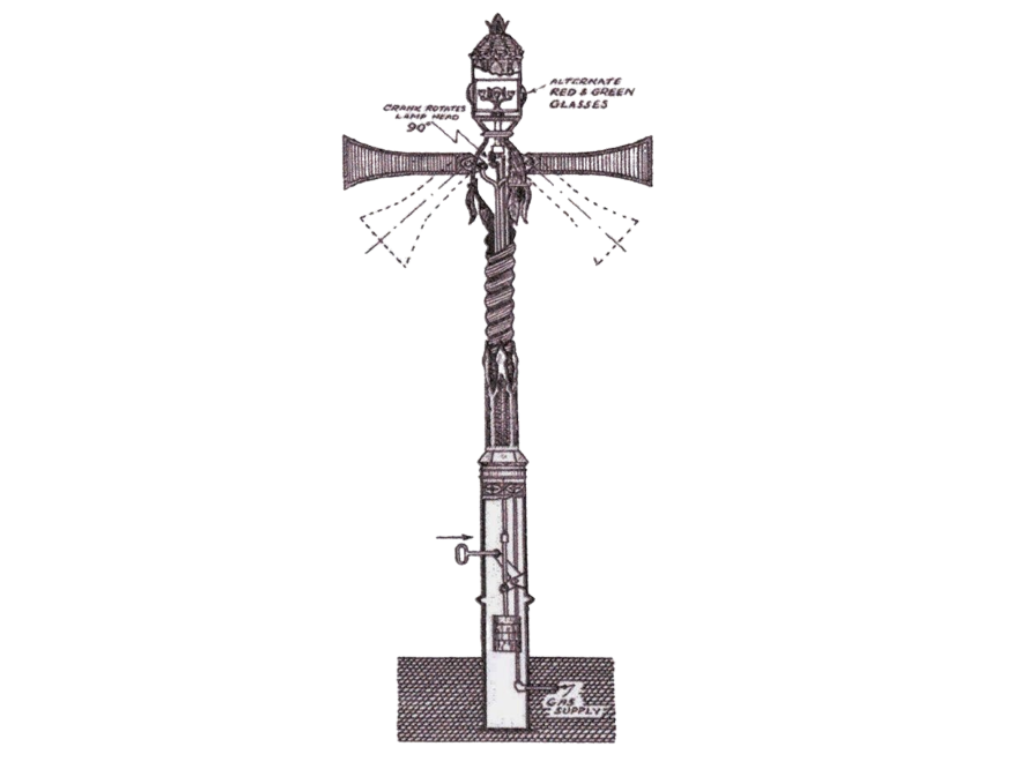
Even before the automobile, traffic collisions were a significant problem in busy cities and crowded intersections. London’s streets were crowded with horse-drawn carriages and pedestrians in the 1860s. For traffic control, John Peake Knight, a British railway manager, proposed adapting railroad methods and invented the first known traffic light system in 1868.
Knight proposed using traffic lights and painting white lines on roads to designate lanes for different types of vehicles. He also suggested a system of one-way streets and the construction of roundabouts to ease congestion.
The first traffic light was gas-powered and human-operated. A gas-powered semaphore arm was used to indicate whether it was safe for traffic to proceed, and at night, red and green lights were mounted on the arms to indicate the same. In a small hut beside the road, a police constable operated the signal with red and green lights.
The first traffic light system was installed on December 9, 1868, near Westminster Bridge and the Houses of Parliament in London. However, only a month later, a police officer was severely injured due to a gas leak. The traffic light system was dropped, citing safety concerns.
The Birdhouse!
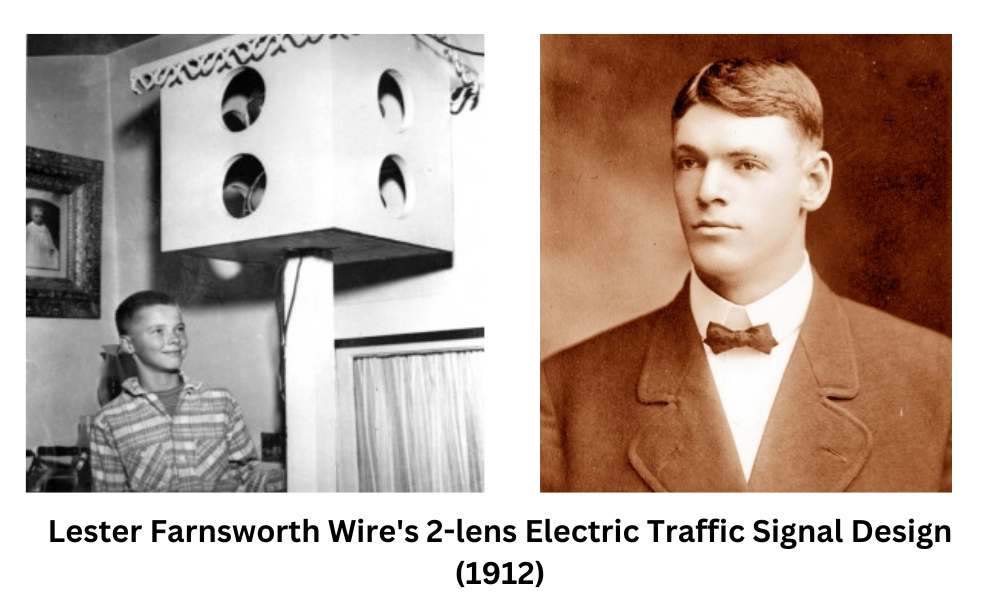
The first electric traffic signal came about 44 years later. In 1912, Lester Farnsworth Wire, a police officer, designed the first two-position electric traffic light system. The design looked like a 4-way birdhouse mounted on a tall pole and with red and green bulbs inside it. It was placed in the middle of the intersection and powered by overhead lines.
The signal could be operated from the side of the road, thus making it easier and safer for the police officer to control the traffic. However, Wire didn’t patent his invention, and his claim for the electric traffic light invention is disputed.
The first electric traffic signal installation.
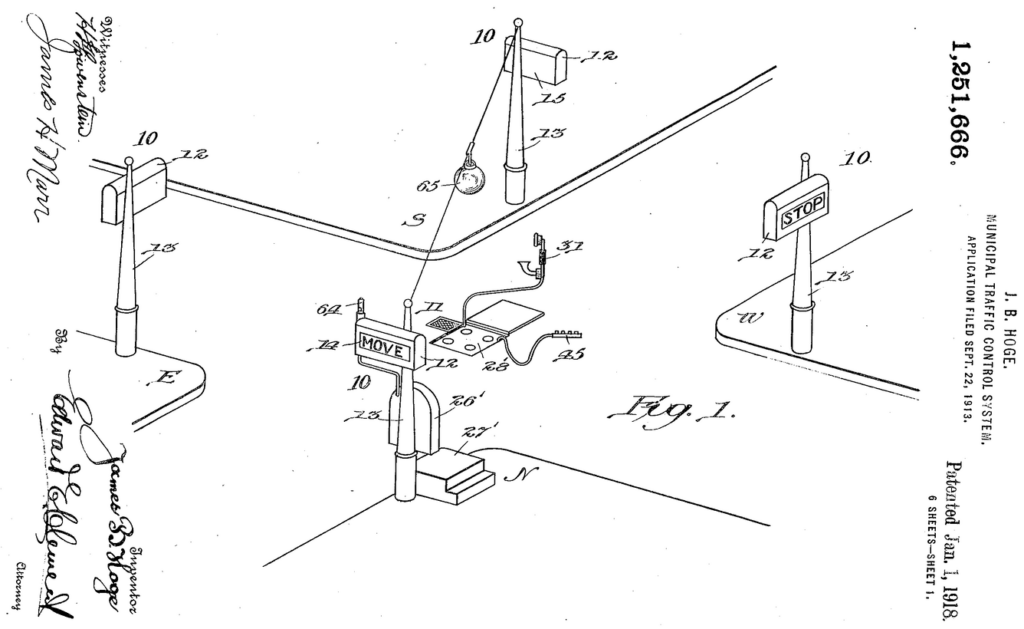
The invention of the first electric traffic signal is largely credited to James B. Hoge, who applied for the patent in 1913 and was granted the same in 1918. James’s design didn’t have the traditional red or green light, instead used illuminated “stop” and ‘move’ signs.
Based on Hoge’s design, on August 5, 1914, the first electric traffic light was installed in Cleveland, Ohio, at the corner of East 105th Street and Euclid Avenue.
Evolution to the modern traffic light
In 1917, William Ghiglieri patented a two-position electric traffic signal system that could be operated manually or change colours automatically at preset intervals. The design loosely resembled modern traffic lights, but it didn’t have the yellow light yet, which was the final piece of the puzzle.
The final finishing touch (Yellow caution light)
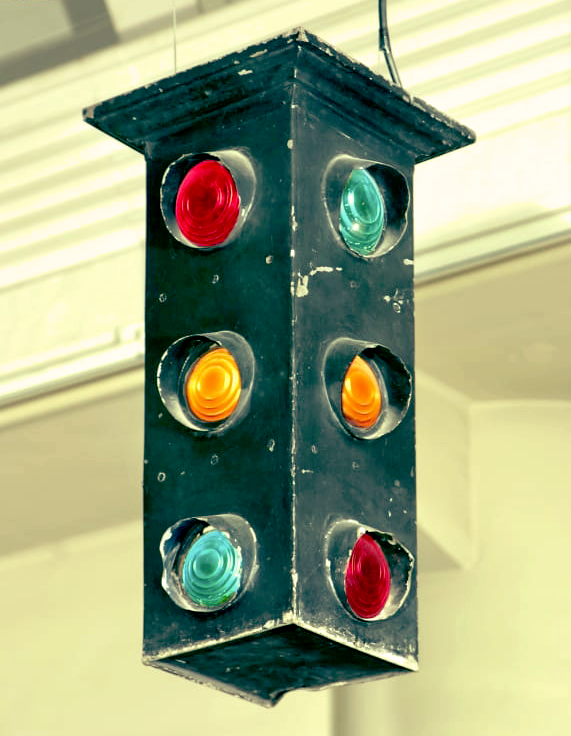
In 1920, William Potts, a Detroit Police officer, developed a three-colour electric signal, the modern traffic signal that we are used to. He improved on the predecessor and added yellow or “caution” light between the red and green lights. This is how the modern traffic light system we know today was born.
The first 4-way tri-color electric traffic signal was placed at the intersection of Woodward Avenue and Fort Street in Detroit. The 3-color traffic signal was a breakthrough in road safety, allowing for a more efficient and organized way of controlling traffic.
Widespread Adoption
Potts’ invention was soon adopted by cities across the United States and eventually around the world. Decades later, the three-color traffic signal became a globally accepted standard.
Over time, the design of traffic lights evolved and became more advanced, incorporating features such as automatic timers and computerized control systems.
Why Red, Yellow & Green?
Red has the highest wavelength, making it easy to spot from a far distance than other colors. Also, red usually signifies danger which made it an obvious choice for a “Stop” sign.
Green is most associated with progress and safety. Earlier traffic signals had just two colours for stop and go; hence, red was universally associated with stop, and green was used for go. The yellow light, which was added later for caution, was chosen because it was easy to differentiate between red and green.
These colors have been adopted by most countries worldwide and have become a universal symbol for traffic control.
Traffic Signal Advancements
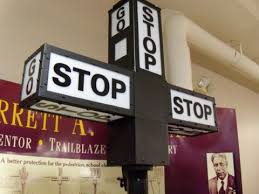
In 1923, Garrett A. Morgan patented a traffic signal that revolutionized traffic control – automatic electric traffic signals. Morgan invented a new type of traffic signal that used a T-shaped pole and, besides the “stop” and “go” signs, also had “stop in all directions” to allow drivers and pedestrians to cross safely. Being unmanned, it was cost-effective to operate and could be installed in more places.
The 1960s saw the introduction of adaptive traffic signals, which could adjust based on traffic flow.
The 1990s saw countdown timer signals installed, which helped drivers and pedestrians know how many seconds they have before the light changes.
The Modern-Day Traffic Light
Over the years, traffic lights have been further improved in efficiency, reliability, and safety through numerous technological advances. The LED lights used in modern traffic lights are more energy-efficient and have a longer lifespan than traditional incandescent lights. Additionally, they emit a brighter, more uniform light, making them easier to see in all weather conditions.
There have also been improvements in the design of traffic lights, with many now featuring a sleek, aerodynamic shape. This helps reduce wind resistance, making them more stable in high winds, reducing the risk of accidents and creating an overall safer signal system for society to rely on.
Computerized traffic control systems have been the biggest advancement in traffic light technology, which has allowed traffic flow to be monitored and controlled in real-time using sensors, cameras, and algorithms. As traffic conditions change, such as accidents or congestion, they can adjust or adapt the timing of signals accordingly. As a result, traffic flows more efficiently, reducing congestion and accident risks.
What Does the Future Look Like for Traffic Lights?
As self-driving cars become more widespread, traffic signals are being reimagined to accommodate new technologies. As per MIT Senseable City Lab, traffic signals, originally invented centuries ago to handle horse carriage traffic, might not be suitable for autonomous vehicles. In a 2016 report, the researchers proposed a slot-based system to handle intersection traffic safely.
The report adds that autonomous cars could communicate with each other and automatically adjust their speed to pass through intersections while maintaining safe distances from other vehicles.
The Bottomline
The invention of the traffic signal has played a critical role in the evolution of modern transportation and has helped to increase safety and efficiency on roads around the world. From early designs that were powered by gas or manual operation, to modern systems that use computer algorithms and artificial intelligence, traffic signals have come a long way.
